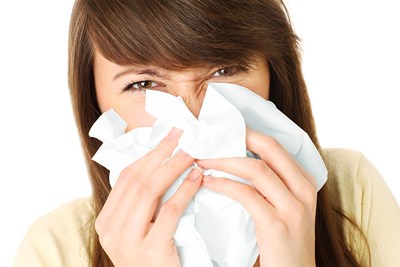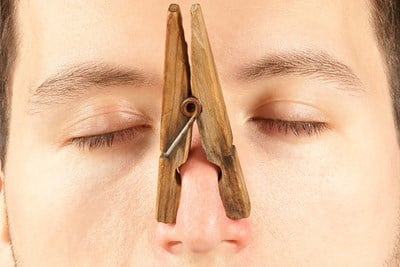Post nasal drip is a symptom of an underlying disorder. Most commonly, respiratory or sinus issues or swallowing disorders are to blame, however, chemical irritants and certain foods can also be problematic. Although post nasal drip can be frustrating, it is generally not dangerous. Here are a few terms to help you understand post nasal drip and its treatment options.
- Muciparous Glands: The muciparous, or mucus, glands are those responsible for secreting mucus. They line tissue in the sinuses, nose, throat, and other parts of the respiratory system. The mucus produced keeps the nasal passages clean by moving dust and pathogens away, preventing infections, and keeping tissue hydrated. This mucus is generally a natural consistency you barely notice, but when it becomes too thick or too thin, it may induce post nasal drip and a sensation of dripping or accumulation in the throat.
- Parasympathetic Nervous System: The parasympathetic nervous system is part of the autonomic nervous system. These systems run involuntary actions of the body, making sure all the things that keep you functional and moving are working properly. The parasympathetic nervous system not only controls the mucus glands, but also the gastrointestinal tract, metabolism, and several other bodily functions.
- Gastroesophageal Reflux Disease (GERD): GERD is a chronic problem in which the lower esophageal sphincter doesn’t close completely. This allows stomach acid to freely move back up the esophagus and irritate the throat and even voice box or sinus cavity. Post nasal drip is commonly associated with GERD.
- Nonallergic Rhinitis: Nonallergic rhinitis is a chronic disorder characterized by constant congestion, sneezing, and other issues redolent of allergies but with no evident cause. The excess mucus that results from nonallergic rhinitis often causes post nasal drip. Antihistamines, nasal sprays, and decongestants may be effective methods of treatment.
- Chronic Sinusitis: Chronic sinusitis is a respiratory condition that lasts around three months. Often caused by a deviated septum, nasal polyps, or infections, chronic sinusitis is generally renitent to conventional treatment. This means post nasal drip brought on by chronic sinusitis can be especially tenacious, and both issues may eventually require surgical intervention.
- Dysphagia: Dysphagia is a swallowing disorder often seen more commonly in older populations. Swallowing becomes more difficult, which means food and liquids can accumulate in the throat; it may not necessarily cause post nasal drip, but it will almost certainly make it worse. Medications, surgeries, and throat exercises are all treatment options for dysphagia.
- Deviated Septum: A deviated septum is an anatomical abnormality that can interfere with nasal drainage, causing post nasal drip. Essentially, the thin tissue that separates the nostrils is off center. This may be a congenital issue or the result of trauma (either at birth or from a later injury, like breaking the nose).
- Otolaryngologist: An otolaryngologist is an ear, nose, and throat specialist physician. This means they frequently deal with a variety of issues involving the sinuses. While some conditions may be treated by a family physician, more serious or chronic primary conditions may require an ENT specialist.
- Endoscopic Sinus Surgery: Chronic sinus conditions may not respond well to medications or home remedies. In this case, it may be time to consider endoscopic sinus surgery. This involves the use of a camera on a small tube (endoscope) to minimize the amount of cutting while enhancing the surgeon's view. The goal of this surgery is to enlarge the connection of passages from the sinuses to the nose, thereby improving drainage capabilities.
- Nasal Irrigators: Nasal irrigators are a noninvasive method of treating post nasal drip. Products like a neti pot may work better than a simple saline spray. There are a variety of nasal irrigators on the market, but you can also simply combine salt or baking soda with water and flush out the sinuses to reduce post nasal dripping.



